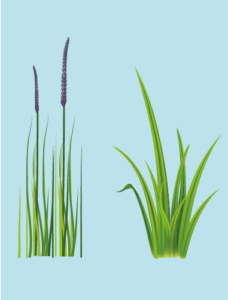Sorghum Rotations: Multiple Benefits

Crop diversification, control of autumn grasses, flexibility of planting dates in spring, soil fertilisation, resilience to climate change – a review of the various benefits of sorghum when included in rotations. By Aude Carrera, regional agronomist with ARVALIS.
 Sorghum Rotations and Controlling Ryegrass and Foxtail
Sorghum Rotations and Controlling Ryegrass and Foxtail
Including a spring crop such as sorghum into rotations that focus on winter grains allows one to break the cycle of autumn weeds. It is an effective way to limit the expansion of weeds that are hard to control, such as ryegrass and foxtail.
In some cases (e.g. on slopes that are not irrigated much), this diversification is the ideal solution, because these are very short rotations (wheat/barley/rapeseed or wheat/barley/sunflower), where corn holds very little place. In such situations, sorghum holds real opportunity.
 Sorghum Rotations and New Outlets
Sorghum Rotations and New Outlets
Crop diversification is useful no matter the type of farm, as it helps multiply outlets and income sources, and spreads risks. The range of market outlets that sorghum can offer is a clear plus: grain sorghum – on grain production farms, feed sorghum – on livestock farms, biomass sorghum for methane plants, etc.
 Sorghum Rotations and Simplicity
Sorghum Rotations and Simplicity
Farmers who wish to include sorghum in their rotations need no specific investments. From planting to harvest, they already have the necessary equipment, as it is the same one that is used in straw cereal or corn production. For planting, it is preferable to use a single-grain seed drill, but one can equally use wheat drills. To harvest, it is enough to mount a grain cutting bar on their harvester, which in principle should be a default machine on any farm.
 Sorghum Rotations and Resilience to Climate Change
Sorghum Rotations and Resilience to Climate Change
Sorghum plantings start quite late, typically (late April – early May) compared with other spring crops. That can be beneficial in case of rainy springs and difficult crop establishment, as other crops are less flexible and adaptable in case of late plantings. In other words, including sorghum in one’s rotations allows one to expand one’s planting windows in spring.
On the other hand, one must make sure that their soil has enough moisture, and in shallow soils, schedule an irrigation. Yet again, sorghum will prove efficient in such a scenario, because its water needs occur early (around mid-July) and therefore prior to the water limitation period (August). Moreover, the plant needs little water during the grain fill stage.
 Sorghum Rotations and Soil Fertility
Sorghum Rotations and Soil Fertility
Sorghum uses moderate amounts of NPK. Moreover, a good part of the minerals it absorbs goes back into the soil at harvest. Thus 40 percent of the nitrogen taken up by the crop gets returned into the soil under the form of organic matter – and the same is true of potassium, most of which is equally returned into the soil through the crop residues. By contrast, phosphorous is essentially exported out of the field at the same time with the grains.











